Best Aviation Week Space Covers Of All Time
March 09, 2016
TV Satellite Weather Map
Harry Wexler, who was director of meteorological research at the U.S. Weather Bureau, created this concept of a weather map of North America as it would be transmitted by television from a satellite 4,000 mi. over Amarillo, Texas.

Rocketdyne Engines for the Atlas 8
The propulsion system for the U.S. Air Force Atlas B intercontinental ballistic missile undergoes a full-power test at the main plant of Rocketdyne, a division of North American Aviation Inc., in Canoga Park, California.

NASA Apollo Mock-Up
A mock-up of the Apollo command module at NASA Ames Research Center was used primarily to determine instrument layouts for the three-man crew.

L-T-V Space Pack Test
Ling-Temco-Vought engineers test the company's back-mounted Space Maneuvering Unit aboard a U.S. Air Force Boeing KC-135 flying Keplerian trajectories over Wright-Patterson AFB, Ohio. The unit used pressurized nitrogen gas for the tests rather than hydrogen peroxide, as would be done in space for safety.
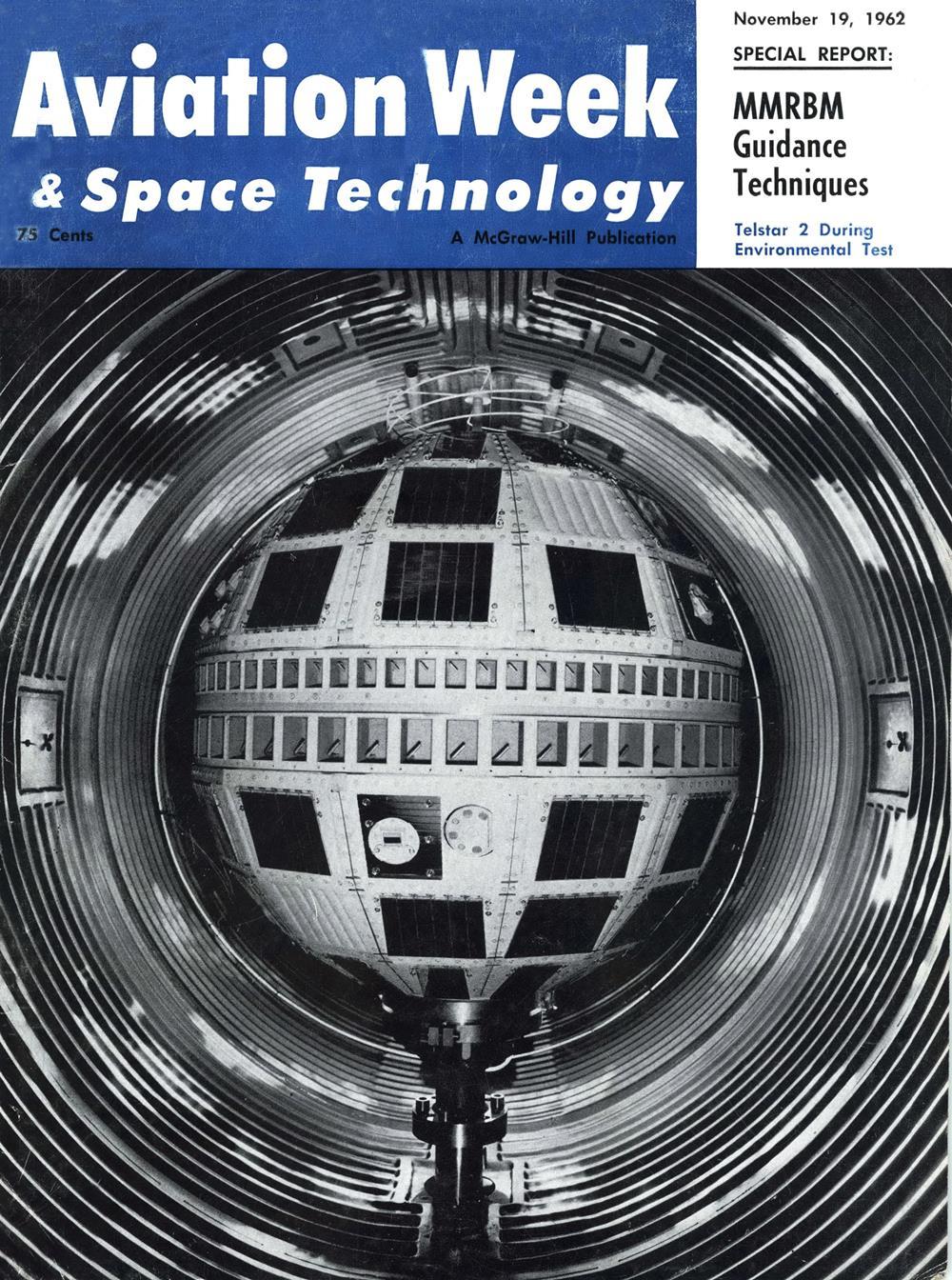
Telestar 2 Environmental Test
Bell Telephone's Telstar 2 is prepared for environmental testing in company's space chamber. Three solar lamps behind satellite directed light arcs into the chamber through Pyrex windows, producing visible and invisible radiation simulating sunlight in space.

Sperry Rand Laser Gyro
A laser gyro is a radically different type of angular rotation sensor with no moving parts. It measures Doppler shift in frequency of two contra-rotating laser beams circulating in an optical ring made up of four (or more) lasers and reflecting mirrors.

Gemini 6 and Gemini 7 Orbital Rendezvous
A Gemini 6 astronaut photographed the Gemini 7 spacecraft during the orbital rendezvous in December 1965.

Gemini 8 and Agena First Docking in Space
Astronaut David R.Scott photographed the Agena target vehicle as Gemini 8 approached to within 45 ft. before docking in space.

Surveyor 1's Footprint on the Moon
The flexing of Surveyor 1's landing legs during its lunar touchdown scooped out a small part of the lunar surface, leaving a small depression when the leg retracted to its normal length.

NASA/Northrop M2/F2 Lifting Body Vehicle
The Northrop/Norair M2/F2 manned litfting-body research vehicle pictured during its second flight.

Lunar Module Adapter Separates from Saturn 5 Apollo Spacecraft
The Saturn 5 launch vehicle flown during the Apollo 6 mission carried more cameras than any previous Saturn.

Earthrise
Earth, with north at the right and the sunset terminator cutting through Africa, rises above the Moon's horizon as the Apollo 8 spacecraft emerges from behind the far side of the Moon for the first time Dec, 24, 1968, after the successful burn for lunar orbit insertion.

Buzz Aldrin Descends to the Moon
Astronaut Edwin E. "Buzz" Aldrin, Jr., stretches his left foot toward the landing pad of Apollo 11 as he descends to the Moon, July 20, 1969. Note the extensive thermal blanket on the lunar module's descent stage and landing probe bent along the surface between Aldrin's feet. Photo by Apollo 11 Cmdr. Neil A. Armstrong.

Microwave Image of Mount Rainier
A passive microwave image of Mount Rainier taken with an Aerojet General radiometer in the U.S. Geological Survey Program shows dry snow near the summit with cold return, snow melting on slopes and the high microwave temperature of frosted valleys indicated by yellows and greens. North is at right.

Falcon Ascent Stage Lifts Off From Moon
Pieces of insulation fly off the lunar module as the Apollo 15 ascent stage lifts off the descent stage to rejoin the orbiting command module.

Pioneer 10 Rectified Image of Jupiter and its Moon Io
Pioneer 10's view of Jupiter from a distance of 1.58 million mi. includes the great red spot, white cellular structures and turbulence in some cloud belts and zones. The "beauty mark" is the shadow of Io, innermost of Jupiter's Galilean moons.

Final Skylab Flyaround
A twin-pole sunshade, erected by the second Skylab crew, covers the solar parasol installed by the first Skylab astronauts during the final flyaround of the workshop after the third manned visit.

Skylab 4 Infrared Image
This Skylab 4 infrared photo is an example of growing and sometimes surprising oceanographic detail returned from satellite imagery.

Soyuz View from Apollo
A Soviet Soyuz iviewed from an Apollo spacecraft during preparations for ASTP ultraviolet absorption experiment maneuvers.

First Space Shuttle Engine Tested
The first space shuttle main engine undergoes a 45-sec., 76%-power-level firing test at NASA's National Space Technologies Laboratories, Bay St. Louis, Mississippi. Note the Mach diamond in the flame.
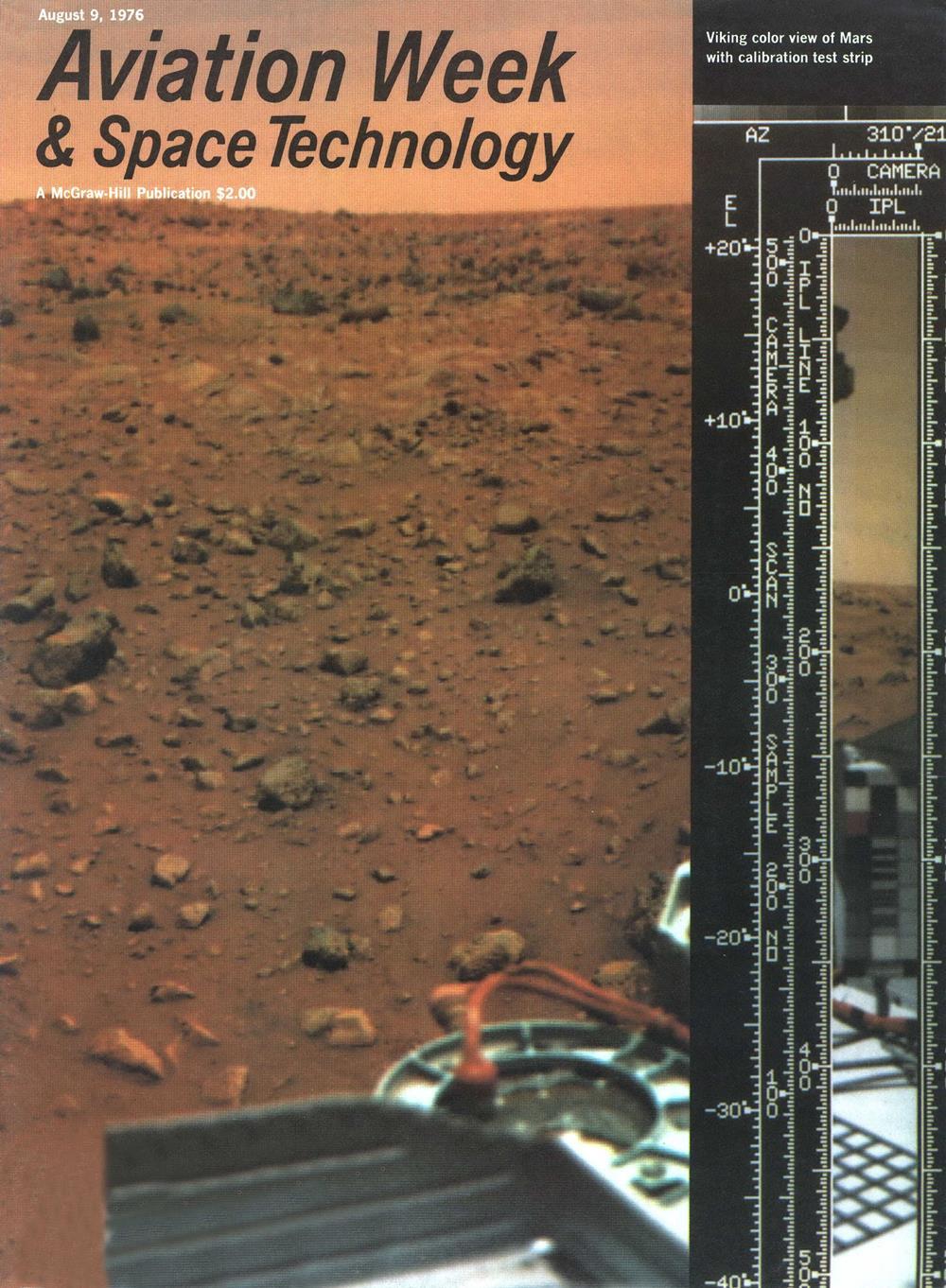
Viking Color View of Mars, With Calibration Test Strip
Color balancing of Viking 1 lander imagery with aid of a test strip centered on a spacecraft-mounted color chart produced what experimenters consider authentic rust-red Martian surface and peach-colored sky.

Orbiter Lowered From Test Stand
The space shuttle Enterprise is lowered from the Marshall Space Flight Center dynamic test stand after completing the first phase of ground vibration testing with a shuttle external propellant tank.

Space Shuttle First Launch
The space shuttle Columbia, attached to its external liquid hyrdogen/oxygen fuel tank and twin solid rocket boosters, accelerates away from Launch Pad 39A at Kennedy Space Center, Florida, following lift off on its first test mission, April 12, 1981.

Voyager 2 False Color of Saturn
Voyager 2 images of Saturn taken through ultraviolet, violet and green filters were combined to make this photograph of the planet from a distance of 27 million miles.
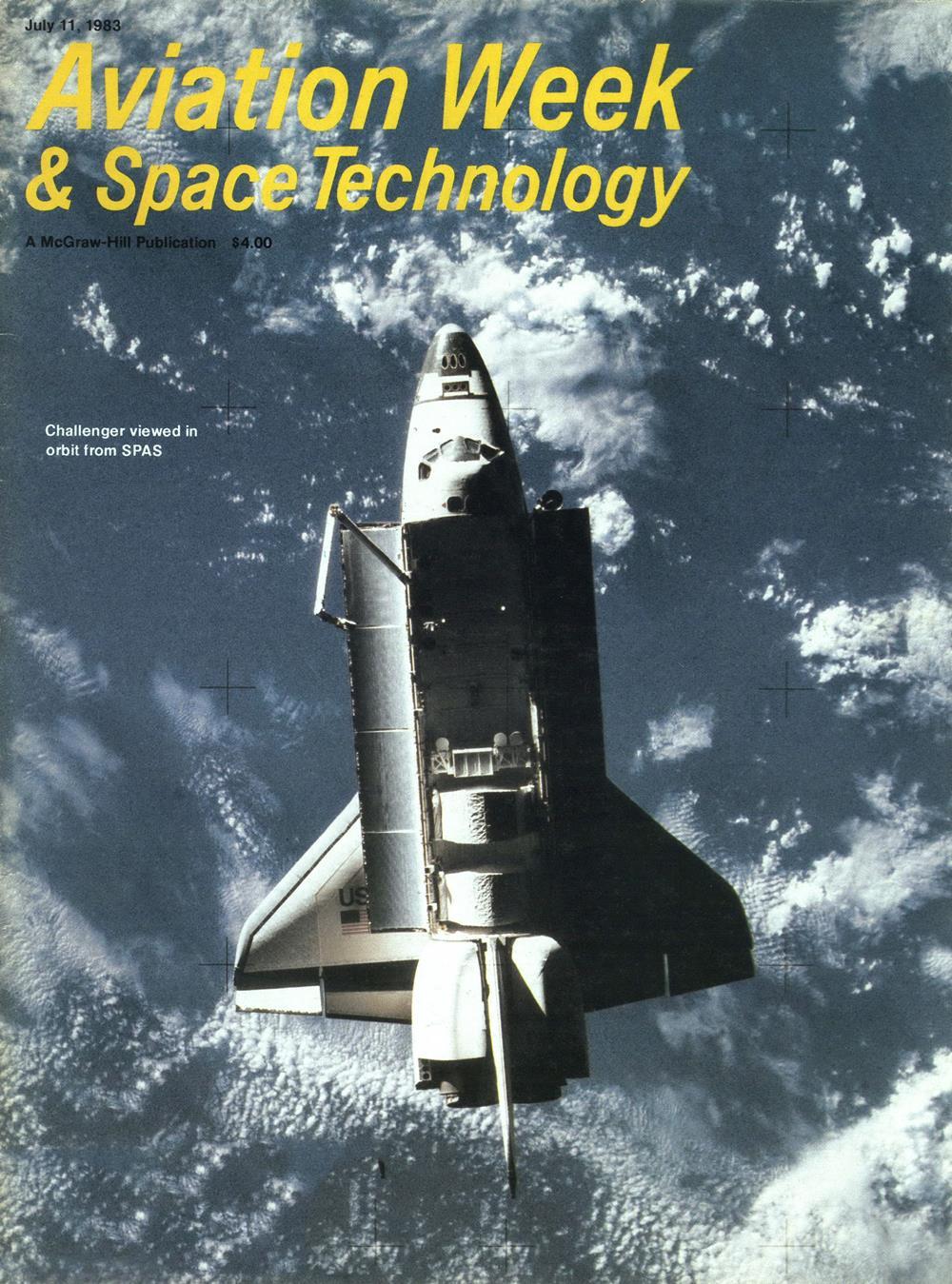
Challenger Viewed in Orbit From SPAS-01
The shuttle Challenger photographed from the German Space Shuttle Palette Satellite 01 (SPAS-01). Visible are the OSTA-2 materials processing palette and communications satellite sunshields in the payload bay and the manipulator arm parked in the form of a 7.

Flying the Martin Marietta Manned Maneuvering Unit in Orbit
Astronaut Navy Capt. Bruce McCandless flies the Martin Marietta Manned Maneuvering Unit untethered away from the shuttle Challenger while orbiting the Earth at an altitude of 150 nm and a speed of 17,500 mph. during STS-41B.

Shuttle Close Up at Mir
In a close encounter of a new kind, Dr. Valery Polyakov peers out of a window of the Mir core module as Discovery approaches within 37 ft.

Missions to Mir: Prelude to International Space Station Era

Mars Exploration in a New Era
Sojourner, the first vehicle to travel over the surface of another planet, sits in its predeployment configuration on a petal of the Mars Pathfinder shortly after landing in Ares Vallis of Mars on July 4, 1997.

International Space Station Era Begins
The International Space Station orbiting at 245 mi. altitude, viewed from the space shuttle Endeavour.

A New Era in Satellite Imaging
Space Imaging's Ikonos, the first of several new high-resolution commercial satellites to reach orbit, shot this 1-meter-resolution panchromatic image of London in October 1999.
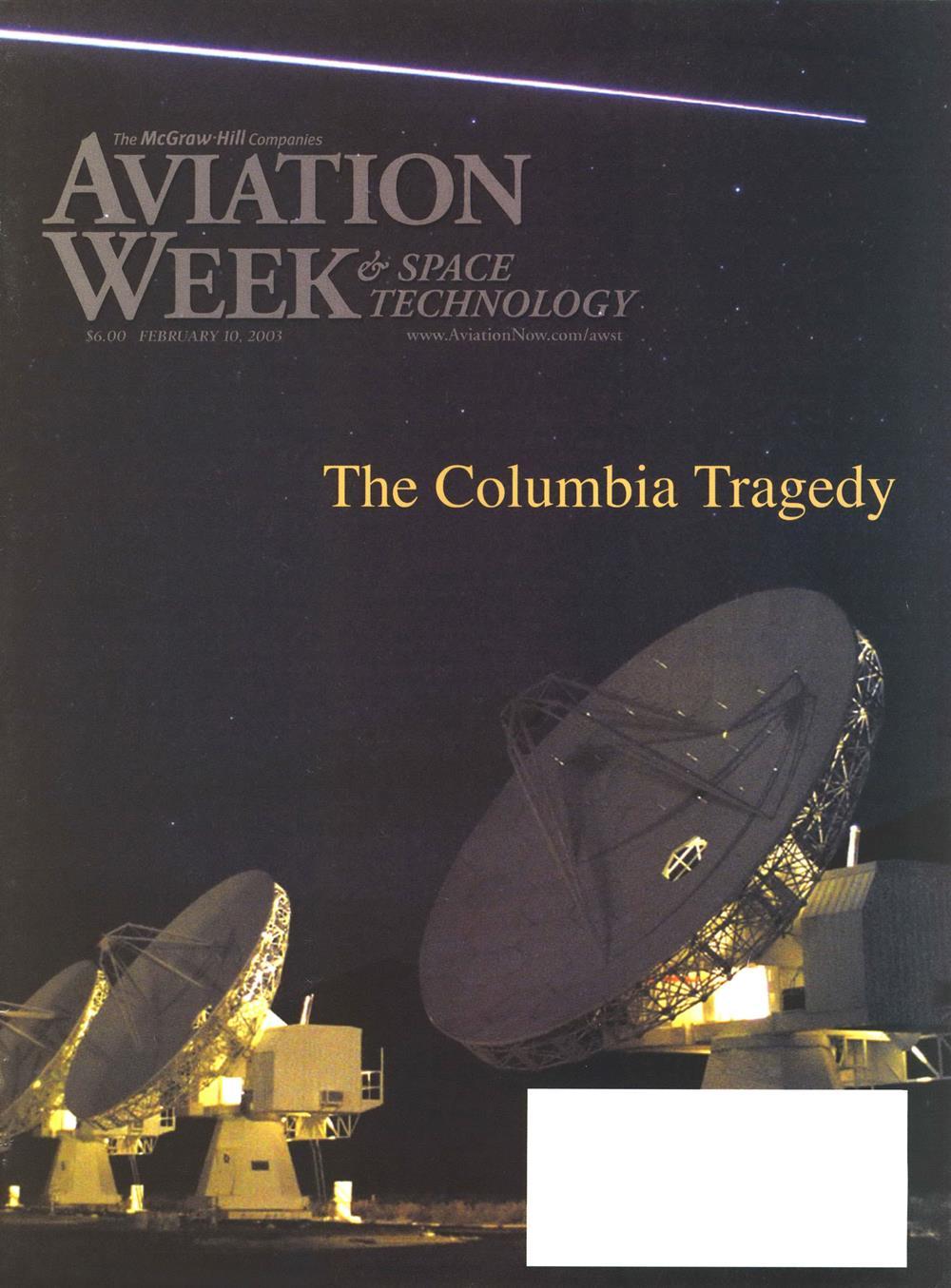
The Columbia Tragedy
The space shuttle Columbia passes over the Owens Valley Radio Observatory as it reenters the atmosphere on its final flight. Small parts are probably coming off the orbiter in this picture, which was taken 1-2 min. after telemetry measurements began to fail.

SpaceShipOne's Flight to Victory
Scaled Composites pilot Brian Binnie took this photo from SpaceShipOne near the 367,000-ft. apogee of the Oct. 4, 2004, flight that won the Ansari X Prize.
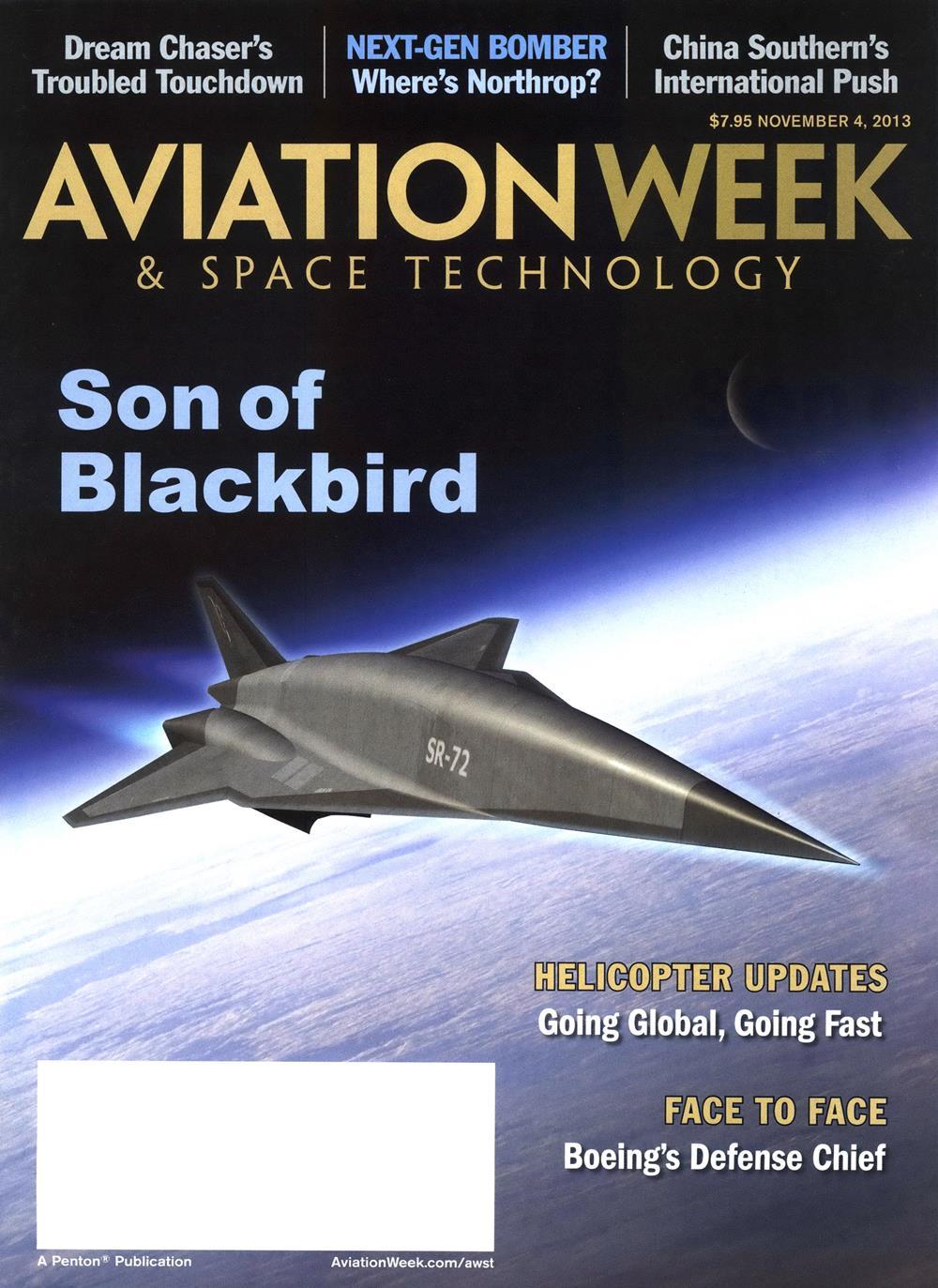
Son of Blackbird
Lockheed Martin's Skunk Works takes the wraps off its proposed SR-72, Mach-6 successor to its long-retired SR-71 Blackbird spy plane.

Hubble Telescope Checkout
The Hubble Telescope checked out well initially, but weeks of work remained to focus the space telescope after the space shuttle Endeavour crew's record-setting five days of extravehicular activity.

Shuttle at 15: A Look Back, a Look Ahead
After 15 years of operations, the space shuttle was safer and less expensive. Though it never met early goals, the shuttle was moving toward its original vision and was expected to fly until at least 2010.
From the entirety of Aviation Week's 100-year archive, our editors have selected the covers featured in this gallery as among the most striking depicting space-related events. See what makes each cover 'memorable' and click here to vote for your favorite.